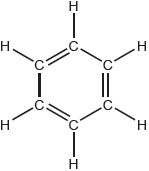| Date | November 2020 | Marks available | 1 | Reference code | 20N.3.sl.TZ0.9 |
| Level | SL | Paper | 3 | Time zone | TZ0 |
| Command term | Suggest | Question number | 9 | Adapted from | N/A |
Question
Gasoline (petrol), biodiesel and ethanol are fuels.
[U.S. Department of Energy. https://afdc.energy.gov/]
Calculate the energy released, in , from the complete combustion of of ethanol.
State a class of organic compounds found in gasoline.
Outline the advantages and disadvantages of using biodiesel instead of gasoline as fuel for a car. Exclude any discussion of cost.
A mixture of gasoline and ethanol is often used as a fuel. Suggest an advantage of such a mixture over the use of pure gasoline. Exclude any discussion of cost.
Contrast the molecular structures of biodiesel and the vegetable oil from which it is formed.
When combusted, all three fuels can release carbon dioxide, a greenhouse gas, as well as particulates. Contrast how carbon dioxide and particulates interact with sunlight.
Methane is another greenhouse gas. Contrast the reasons why methane and carbon dioxide are considered significant greenhouse gases.
Suggest a wavenumber absorbed by methane gas.
Markscheme
✔
alkane
OR
cycloalkane
OR
arene ✔
Accept “alkene”.
Do not accept just “hydrocarbon”, since given in stem.
Do not accept “benzene/aromatic” for “arene”.
Advantages: [2 max]
renewable ✔
uses up waste «such as used cooking oil» ✔
lower carbon footprint/carbon neutral ✔
higher flashpoint ✔
produces less /
OR
less polluting emissions ✔
has lubricating properties
OR
preserves/increases lifespan of engine ✔
increases the life of the catalytic converter ✔
eliminates dependence on foreign suppliers ✔
does not require pipelines/infrastructure «to produce» ✔
relatively less destruction of habitat compared to obtaining petrochemicals ✔
Accept “higher energy density” OR “biodegradable” for advantage.
Disadvantages: [2 max]
needs conversion/transesterification ✔
takes time to produce/grow plants ✔
takes up land
OR
deforestation ✔
fertilizers/pesticides/phosphates/nitrates «used in production of crops» have negative environmental effects ✔
biodiversity affected
OR
loss of habitats «due to energy crop plantations» ✔
cannot be used at low temperatures ✔
variable quality «in production» ✔
high viscosity/can clog/damage engines ✔
Accept “lower specific energy” as disadvantage.
Do not accept “lower octane number” as disadvantage”.
Any one:
uses up fossil fuels more slowly ✔
lower carbon footprint/CO2 emissions ✔
undergoes more complete combustion ✔
produces fewer particulates ✔
higher octane number/rating
OR
less knocking ✔
prevents fuel injection system build up
OR
helps keep engine clean ✔
Accept an example of a suitable advantage even if repeated from 9c.
Any two:
biodiesel has smaller molecules/single «hydrocarbon» chain AND oil has larger molecules/multiple «hydrocarbon» chains ✔
biodiesel is methyl/ethyl ester AND oil has «backbone of» glycerol joined to fatty acids ✔
biodiesel contains one ester group AND oil contains three ester groups ✔
Do not accept properties such as “less viscous” or “lower ignition point”.
carbon dioxide allows sunlight/short wavelength radiation to pass through AND particulates reflect/scatter/absorb sunlight ✔
Accept “particulates reflect/scatter/absorb sunlight AND carbon dioxide does not”.
Accept “ absorbs «radiation» AND particulates reflect/scatter/absorb sunlight”.
Do not accept “traps” for “absorbs”.
carbon dioxide is highly/more abundant «in the atmosphere» ✔
methane is more effective/potent «as a greenhouse gas»
OR
methane/better/more effective at absorbing «radiation»
OR
methane has greater greenhouse factor
OR
methane has greater global warming potential/GWP✔
Accept “carbon dioxide contributes more to global warming” for M1.
any value or range within ✔
Examiners report
Even rather weak candidates answered this one correctly.
Most candidates answered alkanes with a lower number stating hydrocarbons or benzene and therefore lost the mark.
There were many good answers, but few candidates fully scored. Higher energy density and lower specific energy were quite common, and so references to damaging engines. Many students spent more time explaining each advantage rather than simply outlining. There were fewer journalistic and generic answers for this type of question than in the past.
Another question where many candidates obtained the mark. In quite a few cases students repeated the argument for (c) and this allowed them to get two points for the same answer.
Quite disappointing with few candidates producing answers that showed deep understanding. Answers such as less viscous or lower ignition point were common. This question specifically asks for contrasts in the structures not the properties of the compounds. Students need to be reminded that a contrast statement requires something about each substance.
Showed a wide variety of answers but is was worrying that many students limited to explain the greenhouse effect. There were many responses that did not answer the question or only gave a response for one of the 2 substances.
We received many good answers, but it was worrying the number of students that still provided general and shallow comments. Of the 3 contrast question this had the best response.
Many good answers with some students losing the mark as didn't read or understand the question correctly and provided answers in terms of wavelengths.




